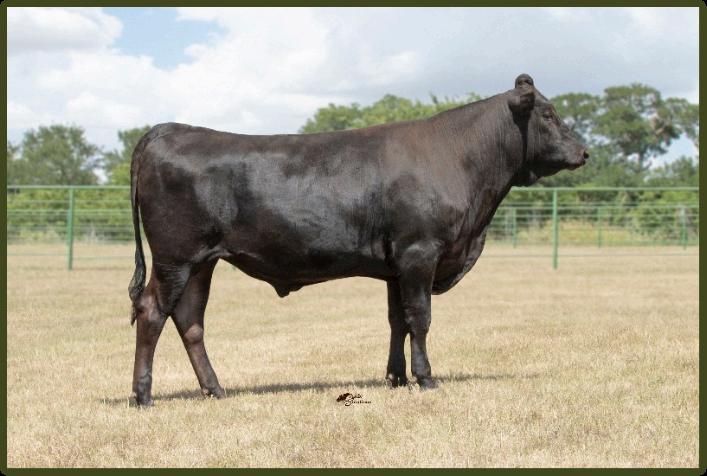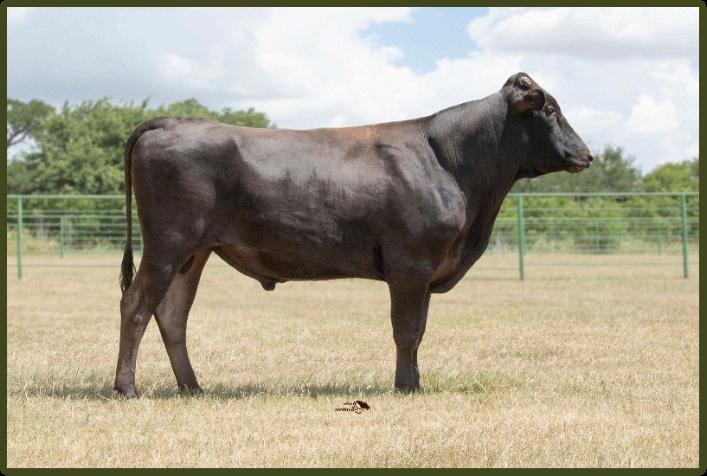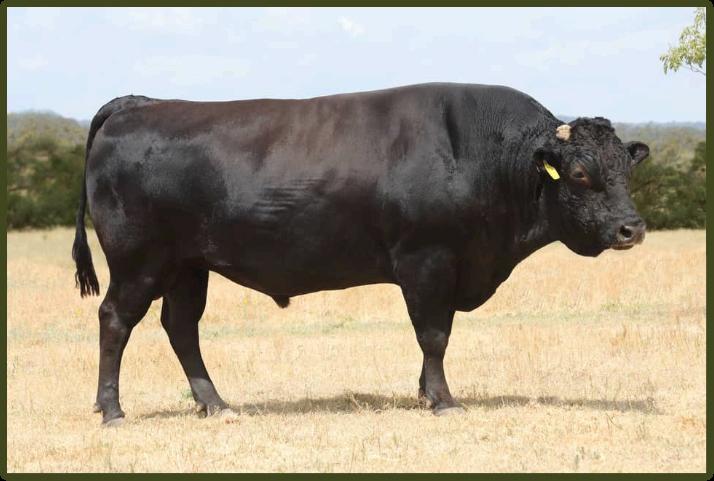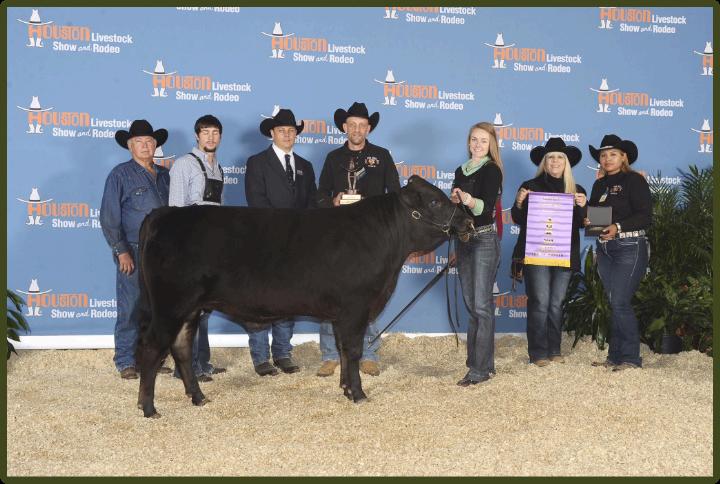






BIRTH
GL: Gestation Length EBV (days) is based on AI records. Lower (negative) GL EBVs indicate shorter gestation lengths which generally relate to lighter birth weights and easier calving.
BW: Birth Weight EBV (kg) is based on the measured birth weight of animals, adjusted for dam age. The lower the value the lighter the calf at birth and the lower the likelihood of a difficult birth. This is particularly important when selecting sires for use over heifers calving at 2 years of age.
CARCASS
CW: Carcass Weight EBV (kg) is based on abattoir carcass records and live weight measurements (particularly at 600-Day weight) and is an indicator of the genetic differences in carcass weight at the industry average slaughter age of 990 days. Larger positive values are more favorable.
EMA: The EMA EBV (cm2) estimates genetic differences in eye muscle area at the 12/13th rib site of a 420kg dressed carcass. More positive EBVs indicates larger eye muscle area and higher Image Camera measurements contribute to this EBV. Ultrasound, Aus-Meat and Japanese digital camera measurements contribute to the EBV.
Milk EBV (kg) is an estimate of an animal’s milking ability. For sires, this EBV is indicative of their daughter’s milking ability as it affects the 200-Day weight of their calves.
200: 200-Day Growth EBV (kg) is calculated from the weight of animals taken between 80 and 300 days of age. Values are adjusted to 200 days, and dam age. This EBV is the best single estimate of an animal’s genetic merit for growth to early ages.
400: 400-Day Weight EBV (kg) is calculated from the weight of progeny taken between 301 and 500 days of age, adjusted to 400 days and dam age. This EBV is the best single estimate of an animal’s genetic merit for yearling weight.
600: 600-Day Weight EBV (kg) is calculated from the weight of progeny taken between 501 and 900 days of age, adjusted to 600 days and for dam age. This EBV is the best single estimate of an animal’s genetic merit for growth beyond yearling age.
GROWTH FERTILITY
SS: Scrotal Size EBV (cm) is an indicator of male fertility in regard to semen quality and quantity in Western cattle breeds. Higher (positive) EBVs indicate higher fertility. There is also a favorable genetic relationship with age of puberty in female progeny. The relationship between scrotal size and fertility in Wagyu is assumed, but not proven.
BREED OBJECT INDEXES
RF: The Rump Fat EBV (mm) estimates the genetic differences in fat depth at the P8 site of a 420kg dressed carcass. More positive EBVs indicate more subcutaneous fat and earlier maturity.
RBY: The Retail Beef Yield Percent EBV (%) estimates the genetic differences in total (boned out) meat yield as a percentage of a 420kg dressed carcass. A more positive EBV indicates higher percentage yield for the 420kg carcass weight.
MS: The Aus-Meat Marble Score is an estimate of the genetic difference in the Marble Score in a 420kg carcass. Marble Score EBVs utilize the AusMeat Marble Score scale of 1 to Digital Image Camera are available, where 10 is equivalent to 9+. Where results from the Japanese digital image camera are available, marbling percentage and positive values are more favorable.
MF: Marbling Fineness Index estimates the genetic differences in the Marbling Fineness Index (degree of fleck of marbling fat) as measured by the Japanese Digital Image Camera. A more positive EBV indicates a higher level of fineness.

Scan this QR code for a more in depth explanation of EBVs
SRI: Self Replacing Index can be used to select Fullblood bulls that will produce more profitable females when these are retained in Fullblood on Purebred herds, in addition to profitable slaughter progeny
FTI: Fullblood Terminal Index has an increased weighting on the Marble Score EBV and can be used to select bulls to produce profitable slaughter progeny where none are retained for breeding
F1: The F1 Terminal Index has an increased weighting on the Marble Score EBV and can be used to select bulls to produce profitable F1 slaughter progeny where none are retained for breeding.
BFI: The Breeder-Feeder Index (BFI) was released in February 2024 and is a new balanced Selection Index, to assist Wagyu breeders to select the most profitable animals in a self-replacing herd, whilst better managing birth weight, milk production, and mature cow weight. Promotes a high growth response, especially for post-weaning gain/Carcass Weight; Reduces the number of high ranking extreme high and low Birth Weight EBV sires; Delivers positive emphasis for Milk and Scrotal Size; Applies a slight negative emphasis on high Mature Cow Weight while strongly positively emphasizing Carcass Weight; whilst also providing a high selection response for Marble Score.
This is a disorder of the surface membrane of the erythrocyte (red blood cells). The protein from the B3 gene makes up the basic structure of the erythrocyte. Cattle that are homozygous (have two copies of the recessive allele) have pernicious anaemia (bleeding caused by the abnormal red blood cells). Death normally occurs within the first 7 days after birth. Some cases live to adulthood but there is a severe retardation in growth.
CHS is a macrophage disorder (a white blood cell that has an important role in the immune response to disease). If cattle have a malfunctioning immune system, this makes them unable to resist the bacterial challenge. Blood is slow to coagulate so often the first indicator is unusual umbilical cord hemorrhage at parturition (calving). Cattle with this syndrome often have an unusually pale coat color.
CL16 (also known as RTD or Renal tubular dysplasia) is a gene disorder on chromosome 1 and causes kidney failure (chronic interstitial nephritis often with zonal fibrosis or excess of fibrous connective tissue). This disorder results in terminal kidney failure and the onset can occur anytime from late adolescence. Cattle are unlikely to live more than 6 years.
F11 is a plasma protein that participates in the formation of blood clots. Factor XI deficiency is an autosomal disorder that is associated with mild bleeding in Wagyu. Affected animals show prolonged bleeding time and abnormal plasma coagulation after trauma or surgical procedures such as castration or dehorning. It is also possible that carrier x Carrier matings have increased difficulty producing viable fertilized embryos or full-term pregnancies and are may be repeated (return to cycle) breeders. Note – this is generally a non-lethal recessive condition with affected animals being able to live and breed as normal. (occurs in Holsteins)


This gene contributes to fibrin stability, which is an integral part of the blood coagulation pathway (blood clotting ability). Disorders in this gene cause severe hemorrhage (bleeding). In calves, hemorrhage is particularly likely to occur in the hindquarters causing blood to pool and stagnate under the hide. In adult cattle any minor trauma (such as hitting the animal) can cause major hemorrhage at the trauma site. Note that no F13 Carriers have been identified in the tested US Wagyu population.
IARS Disorder results in death of affected calves within the last few weeks of gestation, or shortly after birth. Research has identified a mutation in the IARS gene as the cause, resulting in a reduction in activity of a key enzyme, important for protein synthesis for the developing fetus and newborn. Calves affected by this exhibit anaemia, depression, weakness, variable body temperature, difficulty nursing, growth retardation and susceptible to infection.
F - Indicates that the sample submitted for this animal has been tested and found to be free of the causative mutation responsible for the indicated genetic condition. This animal is homozygous free, meaning that it has two copies of the normal variant (or allele) of the gene.
C - Indicates that the sample submitted for this animal has been tested and found to be a carrier of the causative mutation responsible for the indicated genetic condition. This animal is heterozygous for the mutation, meaning that it has one mutant allele and one normal allele. This animal could pass the mutation to approximately half of its progeny.
% - Indicates that, based on pedigree information supplied by the breeder of the animal, the animal has a chance to be a carrier of the mutation responsible for the indicated genetic condition but has not been tested. The higher the indicated percentage, the larger the chance the animal may be a carrier
FU - Indicates that, based on pedigree information supplied by the breeder of the animal, the animal is expected to be free of the mutation responsible for the indicated genetic condition. However, this animal has not been tested for the causative mutation and the AWA gives no guarantee as to the animal’s “free” status.
A - Indicates that the sample submitted for this animal has been tested and found to be affected by the genetic condition. This animal is homozygous for the mutation responsible for the genetic condition and has two copies of the mutant variant of the gene. Two copies of the mutation are necessary to change the physical appearance of that animal. For this reason, an animal with only one copy of the recessive gene (a “Carrier” of the gene) will not show any sign of the trait. An animal with two copies of the recessive mutation (an “Affected” animal) will show the trait. Only a breeding of two Carrier parents or a Carrier and Affected parents can create an Affected animal.


+1.9












































































We believe polled Wagyu will have a significant impact on the future of the Wagyu breed. Polled Wagyu are producing Wagyu cattle from proven genetics, with the added benefit of no horns. When we talk about polled genetics, there are basis concepts that should be understood.
Genetic quality – Our purebred polled Wagyu are bred for carcass performance.
Adaptability – Polled bulls acclimate to most climates in the US and Australia. You can introduce poll wagyu genetics to your herd, without impacting your operating system.
Growth Rate – The pre-weaning growth rate among the first drop of poll wagyu calves should be higher of non-polled purebred calves. This is due to the fact that poll calves are not being subject to the stress of dehorning as well as growth genetics.
No Horns – Welfare concerns related to dehorning – and the associated repetitional risks for cattle farmers are mounting. Besides safety issues, dehorning costs time and labor.
Cost of Horns – If cattle have horns, it makes every competitive encounter at the feed bunk, hay bale, shade tree, or water trough potentially more dangerous.
Poll calves – In one breeding season, a producer can take a herd of horned cows and breed them to a polled bull (homozygous for the polled condition) and you are assured 100% poll progeny:




















